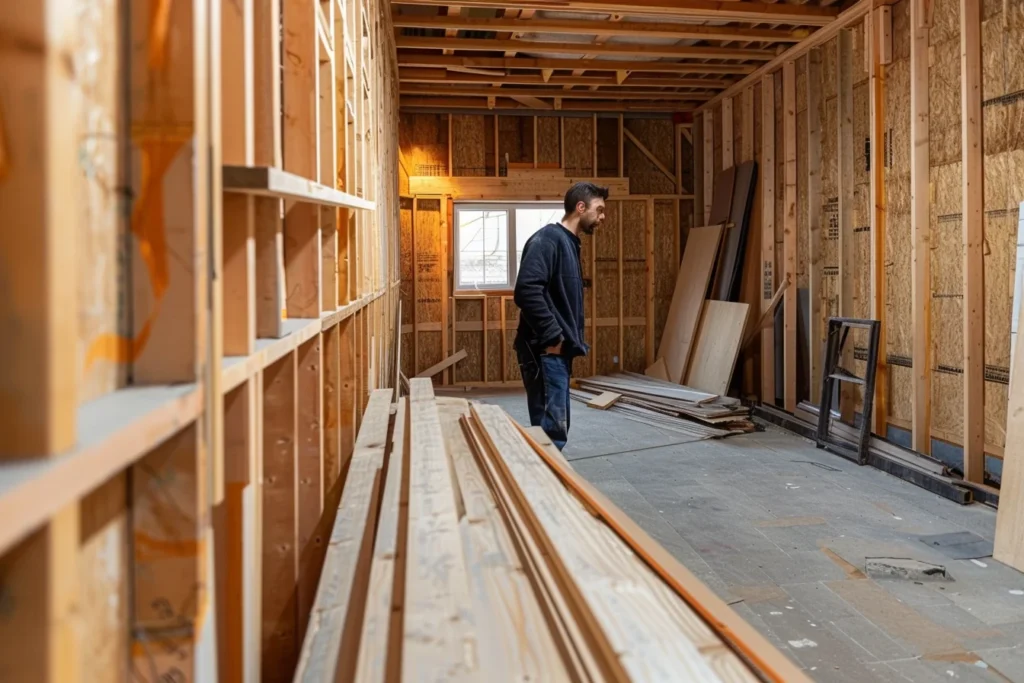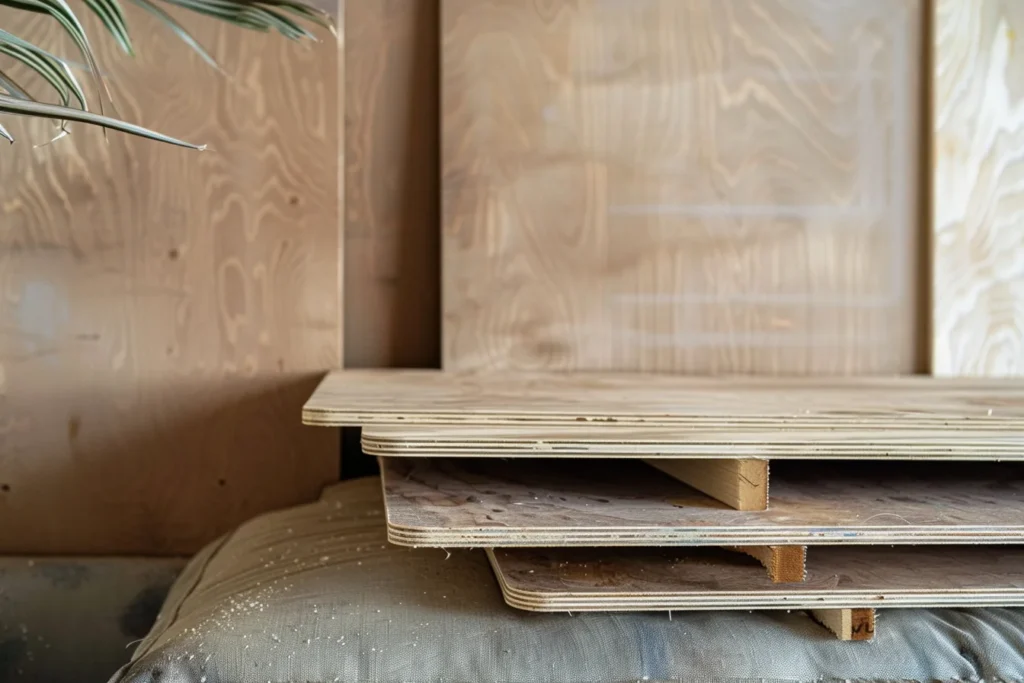Just like that, plywood is the wall coverings’ dark horse, waiting for shiplap to collect all the applause. Probably time to have a look at it again.
Can you throw in some plywood instead of drywall? Yes in theory but is it done? Not really and during my jaunts around construction sites, about as likely as seeing a builder in a tutu.
When people think of plywood they tend to have negative preconceptions by failing to appreciate the beauty in this kind of wood. I differ with this notion though. Let’s talk about this underdog from a design perspective.
In case you are wondering if we are discussing new yoga poses or breakfast cereals, here’s what you need to know:
Plywood consists of several layers of wood glued together just like a multi-layer cake found at any neighborhood hardware store. This is very affordable compared to other types of wood.

On the contrary, gypsum which geek circles term as cool and smooth is exactly what drywall is made up of.
This mineral gets sandwiched between two thick sheets of paper and has become popular among those who prefer contemporary wall finishes.
These panels are big plates that hold things–you can just cut them easily into the right size for installing them into even tiny holes on your walls.
Then why isn’t everyone going crazy over ply-ship?
Although it does have its advantages – toughness and an overwhelming sense of masculinity – cutting through it feels like wrestling with your life on live TV!
In contrast, drywall can be sliced like soft butter with a hot knife, quick, clean, and quite thrilling.
So could plywood be shiplap 2.0? I don’t know but if you want something different and exciting, maybe now you will go for plyboard instead.
Alternatively, keep using traditional ordinary gypsum boards that homeowners swear by so you do not sweat much on such issues as which color should be painted on walls within the family area.

But let’s talk about why plywood is so amazing. So you need to redo your walls and there’s this thing called plywood that’s extremely portable, even for a single person.
It is so user-friendly that it almost becomes a one-man gig.
Think of it as the kind of Saturday you can have all by yourself without having to buy pizzas for friends in exchange for supporting you.
Meanwhile, drywall just sits there like a large suitcase that you have to drag around an airport and needs 20% more muscle or maybe even two people depending on how high your wall dreams are.
Now what about the glory in not fixing holes, sanding, and using spackling paste and joint compound? Like that maintenance-free buddy who always looks good.
From a time-saving point of view, other than decorative textures in wall coverings, plywood could be seen as some superheroes.
Eric Reinholdt tells us that Plywood has become the style setter among architects and interioristas hunting for new tactile experiences. It’s transforming into a hip yet cozy indoor accent that doesn’t cost much.
And here’s the beauty part: no frantic stud-finding session is required. You can hang art or heavy mirrors using just plywood.

Plywood lets you simply drill through it and away you go – which is wonderful! In fact, some smart folks even put drywall atop their ply sheets to get them ready for hanging those massive pieces without any anchor in sight.
A complete home dressed head-to-toe in plywood Down Under exudes sleek Scandinavian minimalism at its best. The epitome of interior design heaven on earth where aesthetics speak louder than words.
It embodies coolness, tranquility as well as collectedness that makes one feel they are staying forever inside Zen retreats.
It can look amazing when finished up nicely with installation and sealing off with wood glue.
Leave it raw, just add a good coat of durable clear sealer, and you have walls that are not only solid but are attractive to boot.
According to the spaces expert Emily Beach, employing cabinet- or furniture-quality hardwood plywood (or even MDF with a fancy hardwood veneer) finished off with a clear coat can turn any residence into an ultra-modern haven that is stylish and welcoming.
Just look at this modern recording studio using bare ply as a feature wall. It’s like saying I’m cool without trying too hard and it makes one think what was all this shiplap about?
The house doesn’t just look nice, these walls make it feel like you’ve brought the great outdoors into your living room.

So, now that we have had a chance to see Plywood’s moment of fame, let’s turn the tables and talk about its negative aspects. As they say, everything in life has two sides.
Therefore the bottom line is this: when it comes to costing more than drywall, plywood does not come easy on your pocket. This includes both the initial cost as well as expenditure in terms of labor and material.
It’s like choosing between buying a designer handbag or a fake one. Sure, the real one looks amazing but what on earth are you expected to spend for it?
Then there is the question of fire. Apparently, drywall is some sort of superhero when it comes to not catching fire easily Plywood might just be like adding fuel to the fire with combustible wood-based materials.
This could be likened to using hairspray instead of water from the fire extinguisher over an open campfire.
But hold on! If you thought that perhaps fire was all there was about then think again. Amongst other things, there is also a health sequel if the plywood catches fire.
In addition, Philip Etter from the Vermont Agency of Natural Resources throws another twist into burning manufactured wood products by warning against them.
Virtually cuddling up next to burning pieces of lumber can unleash blockbuster volumes of formaldehyde along with possible cameo appearances by even scarier chemicals such as hydrochloric acid and dioxins (cue dramatic music).
It’s like discovering that your most loved comfort food might actually harm you.

So what is under those painted faces?—be it paint, wallpaper, or tears from a home decorator? Most builders and DIY types usually go for drywalling and often enough do so because they’ve got plenty lying around.
Other times though, it simply makes more sense as an option for keeping your house intact while avoiding any possibility of a science lab being accidentally set up inside during heating episodes.
RELATED: 25 Beautiful Coastal Farmhouse Decor Ideas
However, if you still want to use plywood, at least you now have enough information to make an intelligent choice that doesn’t lead to an explosive ending. Me? I like the idea of plywood getting together with sheet rock. Why not do both?
The more mix and match in terms of textures and variety the better. Turning those walls into a kind of collage with all sorts of materials—of course, being careful about it. Because let’s admit it – nobody has ever wanted a boring wall in their life!